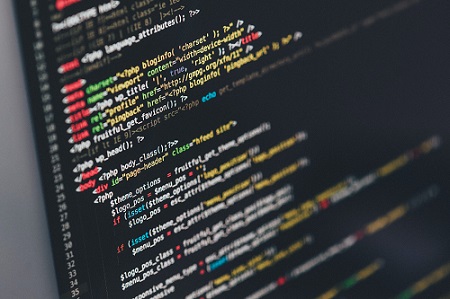728x90
728x90

https://www.acmicpc.net/problem/10026
10026번: 적록색약
적록색약은 빨간색과 초록색의 차이를 거의 느끼지 못한다. 따라서, 적록색약인 사람이 보는 그림은 아닌 사람이 보는 그림과는 좀 다를 수 있다. 크기가 N×N인 그리드의 각 칸에 R(빨강), G(초록)
www.acmicpc.net


난이도: solved.ac 골드 5
알고리즘 분류
DFS, BFS
구현
적록색약이 아닌 눈으로 볼 때와 적록색약인 눈으로 볼 때의 두 경우를 각각의 함수 eyes1, eyes2로 만들었다
eyes1은 일반 BFS 함수와 동일하고,
eyes2는 R과 G를 동일한 색으로 봐야하므로 큐에 맨 처음으로 들어가는 색깔이 R이나 G인 경우에는 B를 제외한 색(R 또는 G)일 때만 탐색을 이어나가고,
큐에 맨 처음으로 들어가는 색이 B일 때는 B일 때만 탐색을 이어가도록 했다
처음엔 큐에 맨 처음으로 들어가는 색깔의 위치에 visited[i][j] = 1을 깜빡하고 하지 않아서 '메모리 초과'가 발생했지만
이를 넣어주니 바로 정답처리 되었다
코드
#define _CRT_SECURE_NO_WARNINGS
#include<stdio.h>
#include<stdlib.h>
#include<string.h>
/* BFS 사용을 위한 큐 */
typedef struct _Queue {
int y;
int x;
} Queue;
int front = -1, rear = -1;
int N, cnt1, cnt2;
int dy[4] = { 0,1,0,-1 };
int dx[4] = { 1,0,-1,0 };
/* eyes1: 적록색약이 아닌 눈, eyes2: 적록색약인 눈 */
void eyes1(char** map, int** visited, int i, int j);
void eyes2(char** map, int** visited, int i, int j);
int main() {
scanf("%d", &N);
char** map = (char**)calloc(N, sizeof(char*));
int** visited = (int**)calloc(N, sizeof(int*));
int i, j;
for (i = 0; i < N; i++) {
map[i] = (char*)calloc(N, sizeof(char));
visited[i] = (int*)calloc(N, sizeof(int));
}
for (i = 0; i < N; i++)
for (j = 0; j < N; j++)
scanf(" %c", &map[i][j]);
for (i = 0; i < N; i++) {
for (j = 0; j < N; j++) {
if (!visited[i][j]) {
eyes1(map, visited, i, j);
cnt1++;
}
}
}
/* visited 배열 원소 모두 0으로 초기화 */
for (i = 0; i < N; i++)
memset(visited[i], 0, sizeof(int) * N);
/* queue의 fornt, rear 초기화 */
front = -1;
rear = -1;
for (i = 0; i < N; i++) {
for (j = 0; j < N; j++) {
if (!visited[i][j]) {
eyes2(map, visited, i, j);
cnt2++;
}
}
}
printf("%d %d", cnt1, cnt2);
for (i = 0; i < N; i++) {
free(map[i]);
free(visited[i]);
}
free(map);
free(visited);
return 0;
}
void eyes1(char** map, int** visited, int i, int j) {
char color = map[i][j]; // map[i][j]에 저장된 알파벳(색깔)
/* 큐 동적 할당 */
Queue* q = (Queue*)calloc((N + 1) * (N + 1), sizeof(Queue));
/* 일반 BFS와 동일 */
rear++;
q[rear].y = i;
q[rear].x = j;
visited[i][j] = 1;
while (front < rear) {
front++;
for (int dir = 0; dir < 4; dir++) {
int ny = q[front].y + dy[dir];
int nx = q[front].x + dx[dir];
if (ny >= 0 && ny < N && nx >= 0 && nx < N) {
if (map[ny][nx] == color && !visited[ny][nx]) {
rear++;
q[rear].y = ny;
q[rear].x = nx;
visited[ny][nx] = 1;
}
}
}
}
free(q);
}
void eyes2(char** map, int** visited, int i, int j) {
char color = map[i][j];
Queue* q = (Queue*)calloc((N + 1) * (N + 1), sizeof(Queue));
rear++;
q[rear].y = i;
q[rear].x = j;
visited[i][j] = 1;
while (front < rear) {
front++;
for (int dir = 0; dir < 4; dir++) {
int ny = q[front].y + dy[dir];
int nx = q[front].x + dx[dir];
if (ny >= 0 && ny < N && nx >= 0 && nx < N) {
if (!visited[ny][nx]) {
/* R과 G는 동일한 색으로 봐야하므로 */
if (color == 'R' || color == 'G') {
if (map[ny][nx] != 'B') {
rear++;
q[rear].y = ny;
q[rear].x = nx;
visited[ny][nx] = 1;
}
}
/* B인 경우 */
else if (map[ny][nx] == color) {
rear++;
q[rear].y = ny;
q[rear].x = nx;
visited[ny][nx] = 1;
}
}
}
}
}
free(q);
}
반응형

